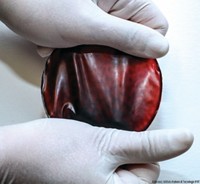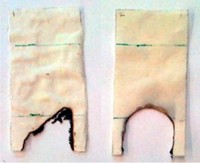Advertisement
Grab your lab coat. Let's get started
Welcome!
Welcome!
Create an account below to get 6 C&EN articles per month, receive newsletters and more - all free.
It seems this is your first time logging in online. Please enter the following information to continue.
As an ACS member you automatically get access to this site. All we need is few more details to create your reading experience.
Not you? Sign in with a different account.
Not you? Sign in with a different account.
ERROR 1
ERROR 1
ERROR 2
ERROR 2
ERROR 2
ERROR 2
ERROR 2
Password and Confirm password must match.
If you have an ACS member number, please enter it here so we can link this account to your membership. (optional)
ERROR 2
ACS values your privacy. By submitting your information, you are gaining access to C&EN and subscribing to our weekly newsletter. We use the information you provide to make your reading experience better, and we will never sell your data to third party members.
Environment
Milk Proteins As Ecofriendly Flame Retardants
Caseins, found in the whey left over from cheese production, protect cotton and polyester fabrics from fire
by Journal News and Community
March 17, 2014
| A version of this story appeared in
Volume 92, Issue 11
Many of the compounds used as flame retardants in upholstered furniture and plastics have come under scrutiny for their potentially harmful effects on the environment and human health. Now, researchers have demonstrated that caseins—proteins found in milk—could be a nontoxic alternative (Ind. Eng. Chem. Res. 2014, DOI: 10.1021/ie404089t). Caseins are readily available from the whey by-product of cheese production, says Jenny Alongi of Polytechnic University of Turin, in Italy. She and her colleagues decided to investigate the proteins as flame retardants because of their high phosphorus content. When they burn, a polymer layer of phosphoric acid forms and creates a char that blocks heat transfer to unburned areas of the material, slowing the spread of the fire. The team coated fabric samples with caseins and then tested their flammability. The results were encouraging: In cotton- and polyester-only fabrics, flames quickly extinguished, leaving 86% of the cotton and 77% of the polyester unburned. A 65% cotton-35% polyester blend burned completely but took 60% more time to do so than did untreated material.





Join the conversation
Contact the reporter
Submit a Letter to the Editor for publication
Engage with us on Twitter